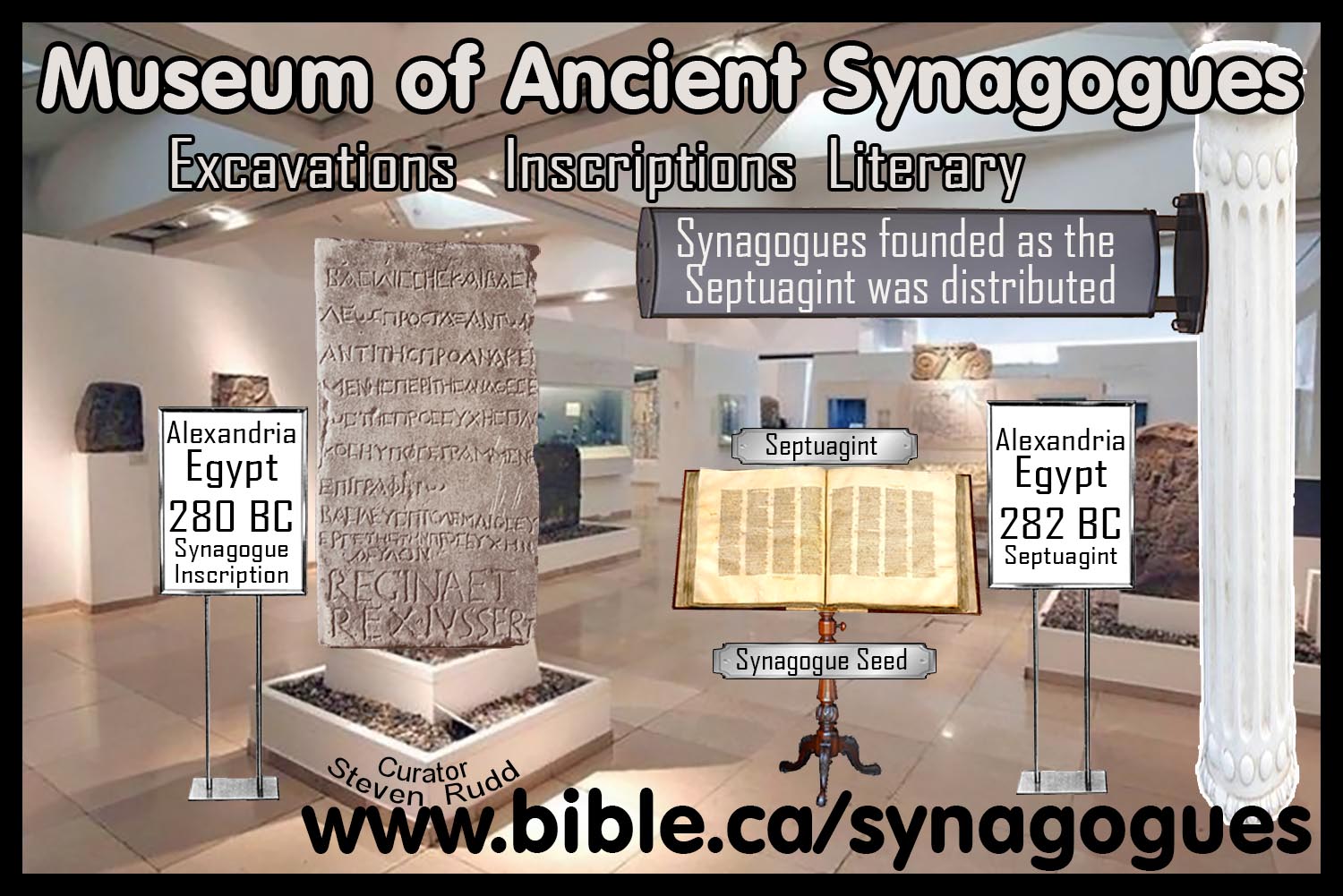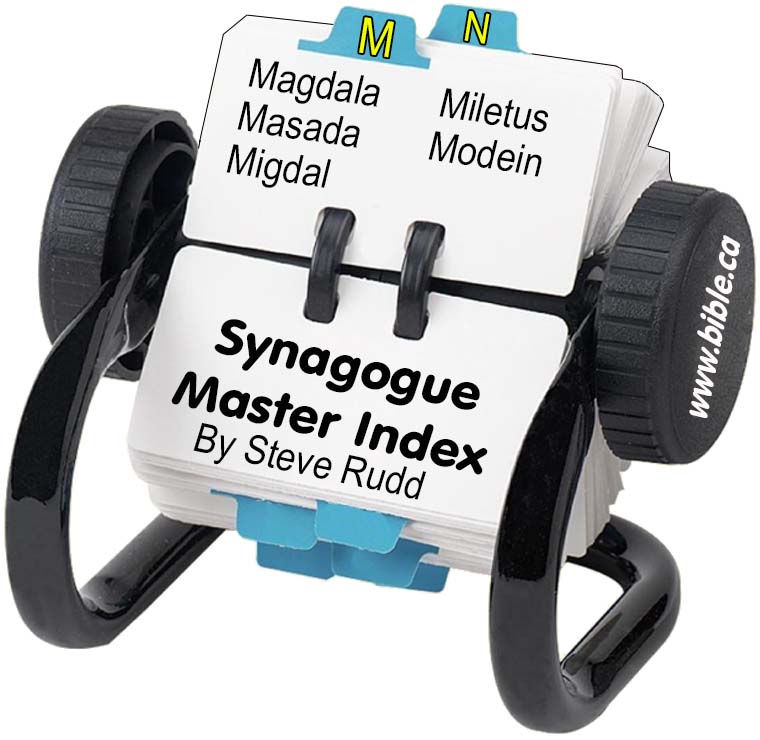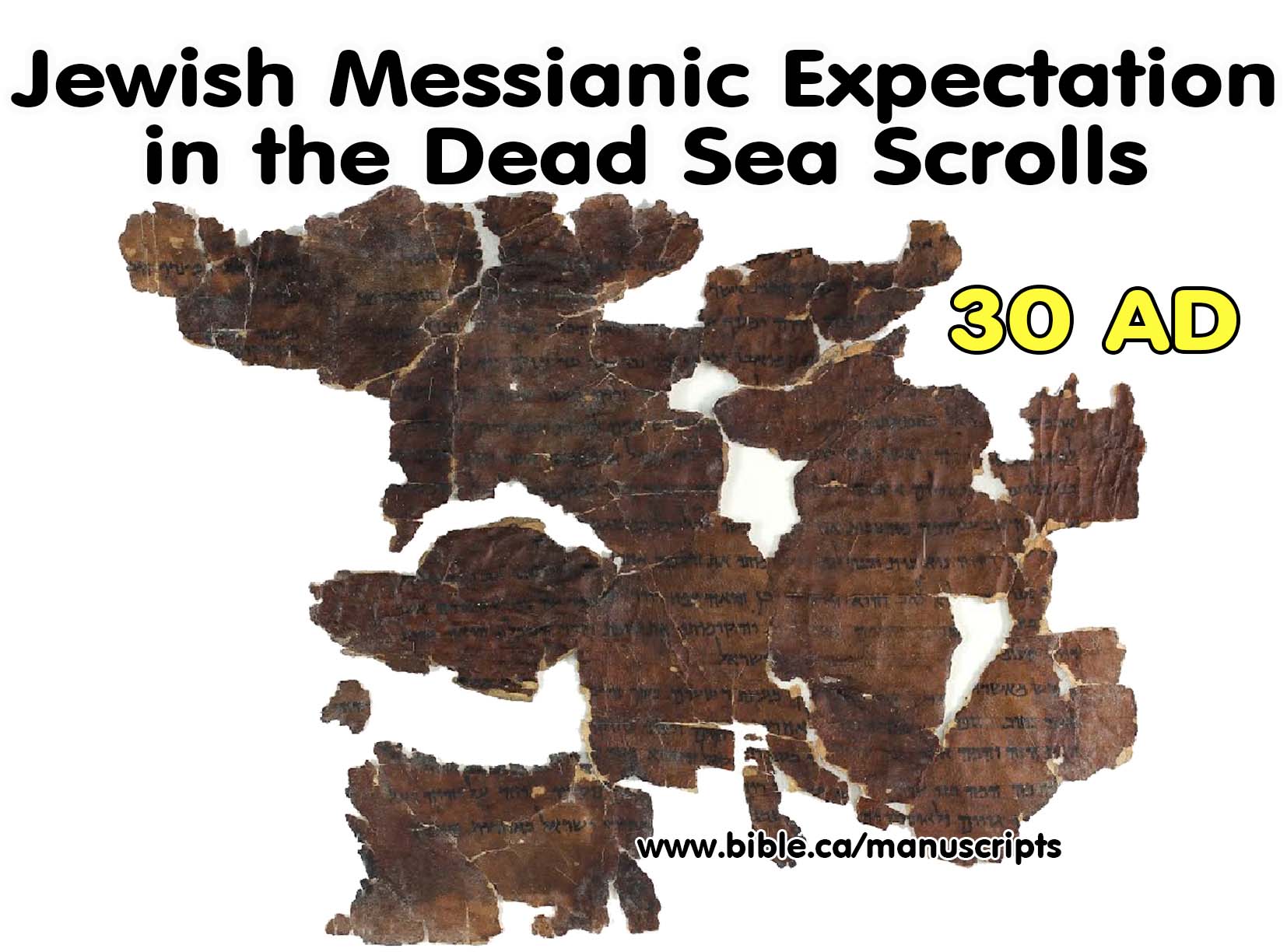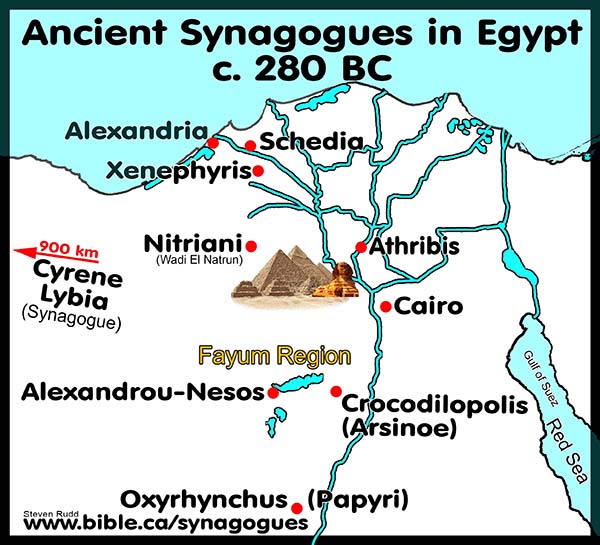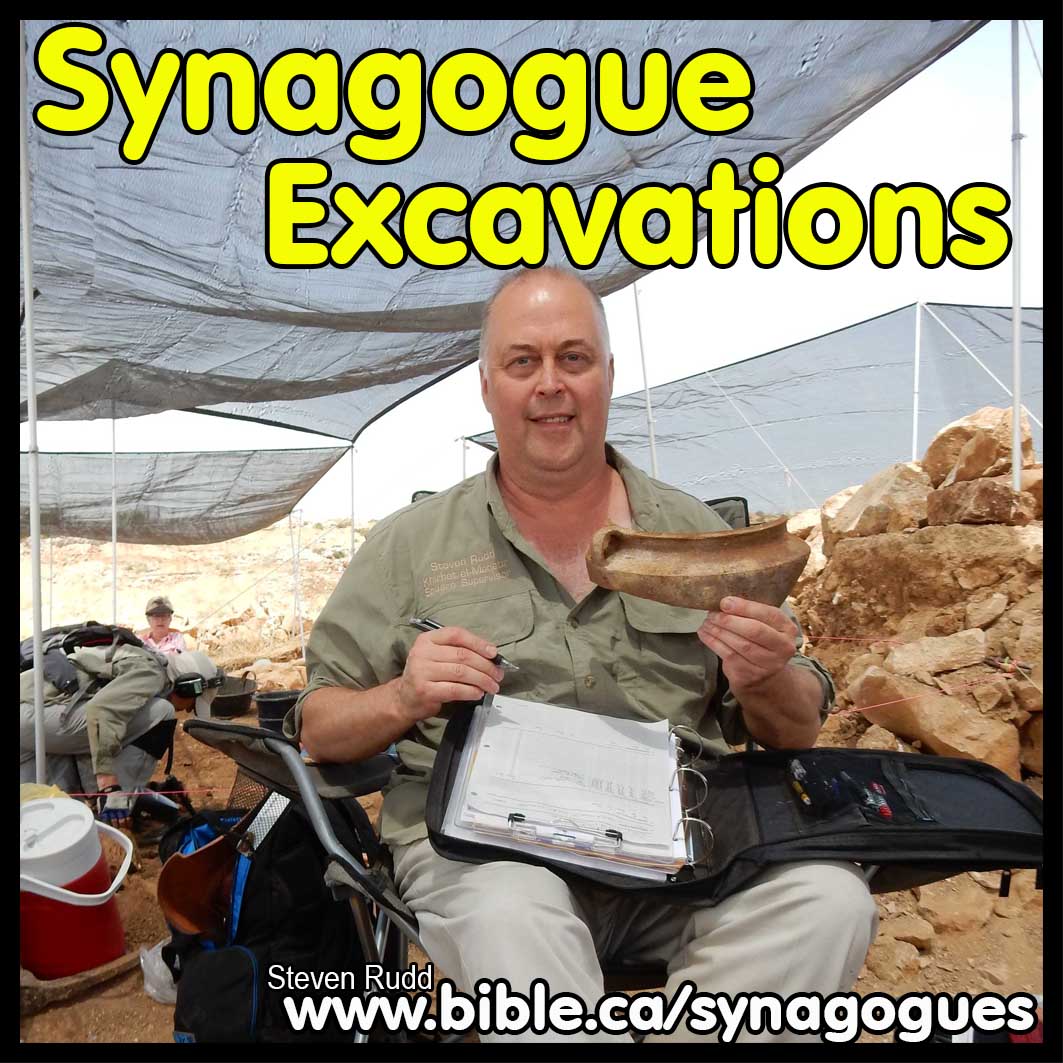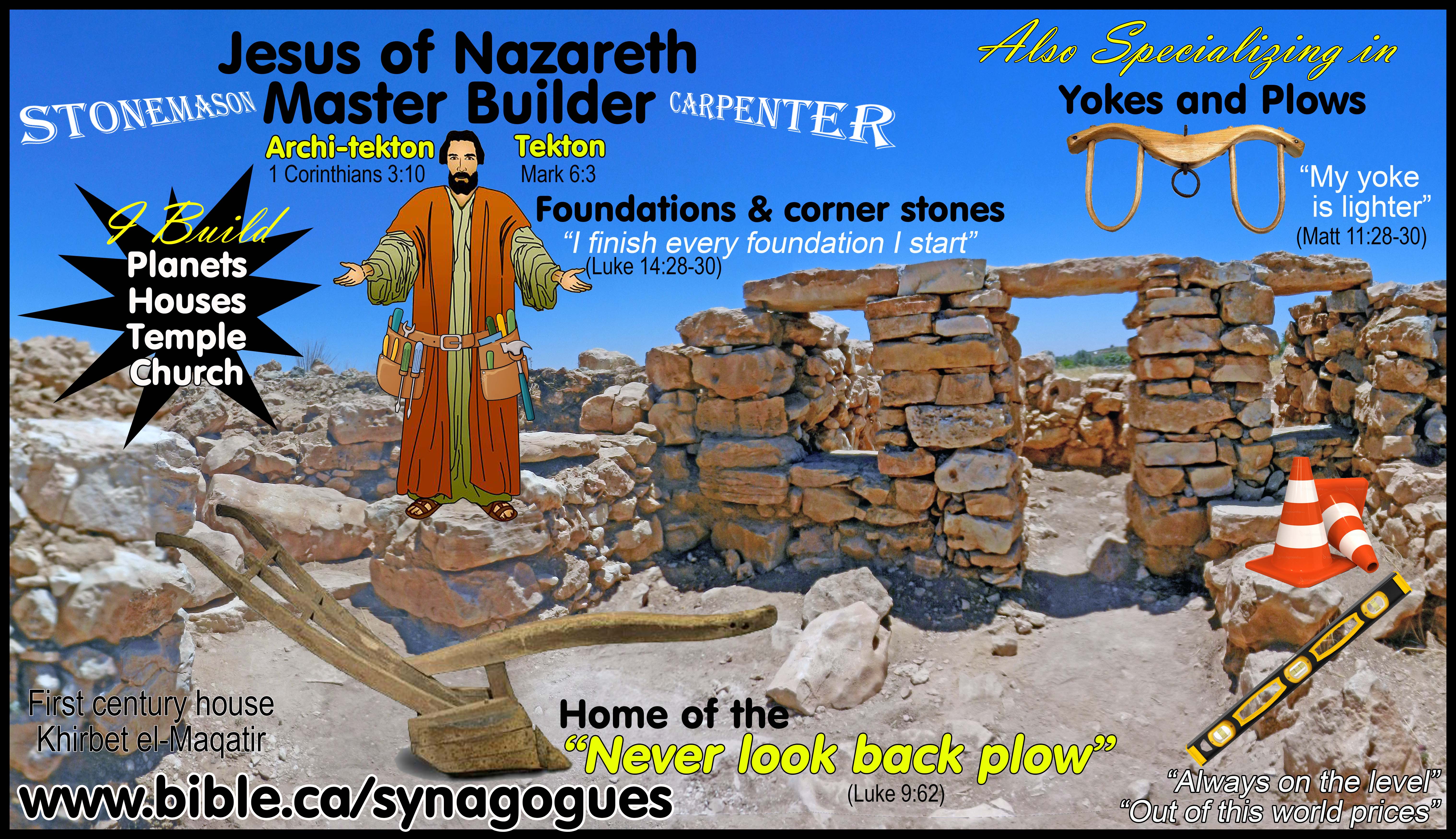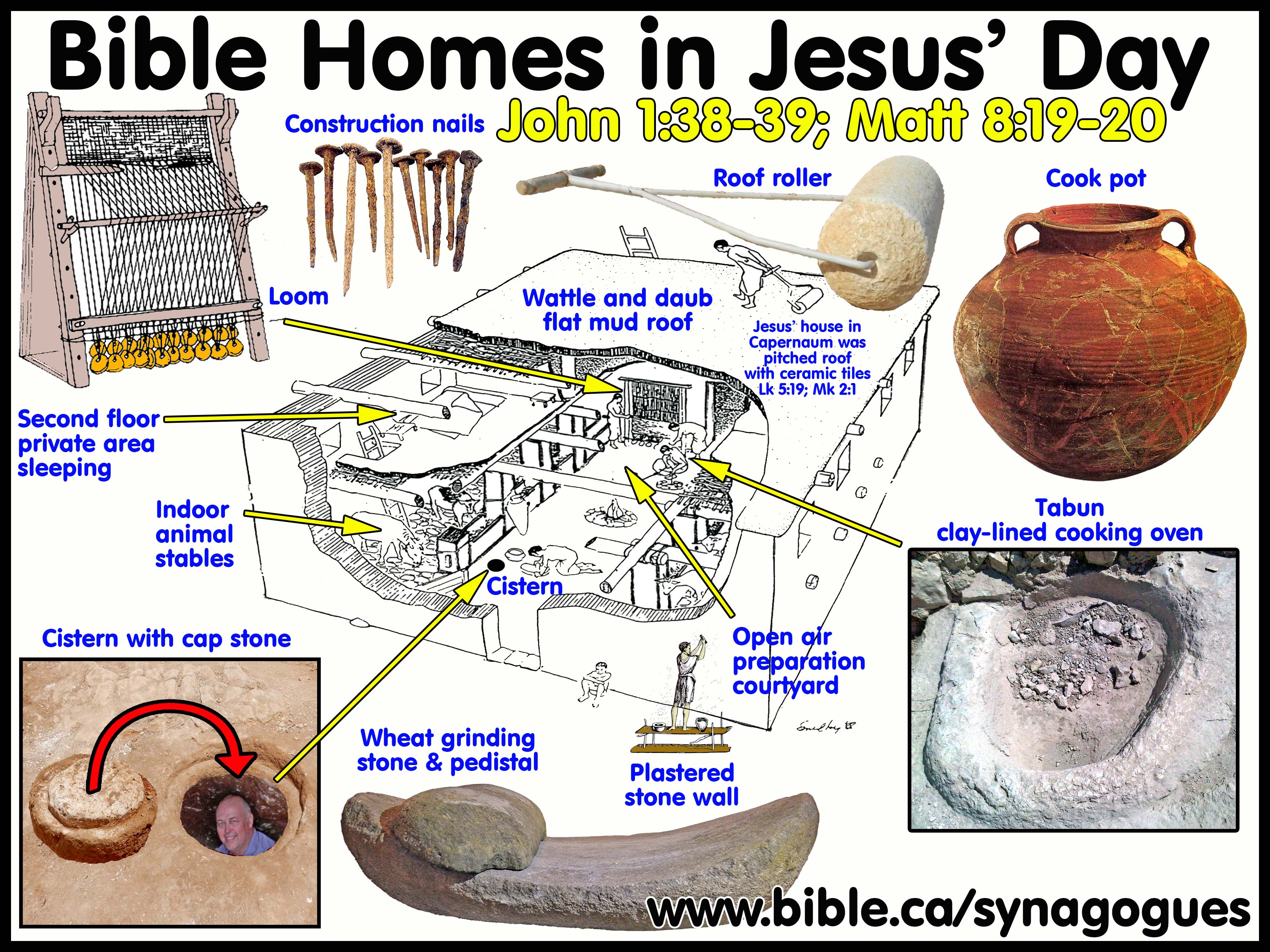Standardized Architectural Synagogue Signature Typology
Synagogue Architecture adopted by the Christian Church
Floorplans and Furnishings of Pre-70 AD Second Temple Period synagogues
“I have heard your prayer and your supplication, which you have made before Me;
I have consecrated this house which you have built by putting My name there forever,
and My eyes and My heart will be there perpetually." (1 Kings 9:3)
Eastern vs. Jerusalem Orientation of synagogues: God’s ears, eyes, heart and name
See also: East orientation of Jewish temples and altars
A. Eastern or Jerusalem Orientation of Jewish synagogues:
1. None of the pre-70 AD synagogues were oriented towards Jerusalem.
a. The first century synagogue at Capernaum, through sheer fluke of geography, almost due north of Jerusalem, making its orientation basically towards Jerusalem. But not close enough on the compass bearing as evidenced in the fact that the later Byzantine addition to the east was reoriented exactly towards Jerusalem, creating a trapezoid exterior wall on the east side of the entire structure.
b. At Herodium one would have to face a long side wall to the right as one entered the building in order to be facing Jerusalem; at Masada, the Jerusalem orientation was opposite the entrance. At Delos the Imus was toward the single eastern entrance with the three southern entrances off to the side.
c. “Masada II was certainly a first-century C.E. synagogue … no effort to alter its orientation or the door's location. Yigael Yadin muddies the issue by saying "it was wholly oriented towards Jerusalem as required."” (Building Jewish in the Roman East, Peter Richardson, p126, 2004 AD)
d. Orientation: “There was no consistency in the orientation of pre-70 synagogues. The synagogue at Gamla was oriented with its door almost towards Jerusalem. This comes as close to the assumed correct orientation as any of these early synagogues. It is likely, however, that this orientation was purely accidental; its location in the town would hardly admit of any other arrangement since the contours shaped its orientation, it was bounded by a street on the south, the casemate wall on the east, an embankment and a street on the north. In Masada, the wall opposite the door came closest to being in the direction of Jerusalem, but it was by no means on that alignment. If it be objected that the circumstances there were awkward for getting the right direction it can be replied that Masada II, the revolutionaries' synagogue, could have been located elsewhere within the overall complex, had orientation been an important factor. If the first stage were a purpose-built synagogue, the original builders could have chosen a location that would have been oriented differently. Herodium offered its renovators little opportunity for choice in the location of the synagogue or its orientation. Once it was decided to squeeze it into the existing spaces available in the fortress complex, the triclinium offered the best possibility. The orientation of all rooms is north-south or east-west; the orientation of the triclinium was east-west, with one long sidewall more or less to Jerusalem. The most one can say is that the orientation was not so important that it prohibited the inclusion of the synagogue in the triclinium. “The much later synagogue of Capernaum "the limestone synagogue" was oriented with its door on the south towards Jerusalem, the then-correct orientation. Excavations below that building uncovered pans of what may have been a first-century synagogue; the orientation was almost identical, but at that stage there were two doors- apparently, one on the west and one on the east wail, an unusual arrangement- with the doors at right angles to the direction of Jerusalem. The Magdala building had a door on the northwest, more or less away from Jerusalem but without any particular reference to Jerusalem. The earliest evidence leads to a simple conclusion: ontowards Jerusalem was irrelevant. It mattered little to the builders how the buildings faced.” (Building Jewish in the Roman East, Peter Richardson, p128, 2004 AD)
e. “ORIENTATION OF THE SYNAGOGUE: The orientation of the synagogue has been much debated but generally it has been accepted that the synagogue was intended to face Jerusalem (Hachlili 1988:199, 232-3). It appears that the construction of most of the synagogues in the Land of Israel took into consideration local topography; their orientation, however, was determined by the Jerusalem-oriented Torah Shrine structure. Consequently, the differences in synagogue building orientation depended on local traditions or vogues regarding the location of the Torah Shrine. For example, Galilean synagogues have both their facade and their Torah shrine on the Jerusalem-oriented wall which for them was the south one; the same is true of the Golan synagogues at Dabiyye, 'En Nashut, and Umm el-Qanatir (Figs. 111-31, III-57a—c), whereas the Jerusalem-oriented wall of the Judean broadhouse synagogues of Eshtemo`a and Susiya faced north and their entrances were on the east wall (Fig. III-60a, b). Most of the sixth-century CE synagogue buildings have their apses on the Jerusalem-oriented wall. The Beth Alpha synagogue, for instance, has its apse on the southern Jerusalem-oriented wall and its entrances on the opposite wall (Fig. IV-44:4), whereas the southern synagogues of Ma`on-Nirim and Gaza have their apses on the northern Jerusalem-oriented wall and their entrances on the opposite wall (Fig. 1V-44:6, 7). The Jericho apse (Fig. IV-44:5) is built on the western Jerusalem-oriented wall and has entrances facing it. Exceptions to this rule are the Sepphoris aedicula (Fig. IV-36:14) and the Beth Shean A apse (Fig. IV-44:10), where the Torah Shrines were constructed on the west. Scholars propose that more than one tradition existed with regard to the orientation of synagogue structures (Avi-Yonah 1973:42; Seager 1981:41). However, it seems most likely that synagogue orientation was determined by the position of the Torah Shrine structure (see above). The congregation inside the hall prayed facing the Torah Shrine, and, therefore, Jerusalem (Hachlili 1976:52). The T. Meg. IV, 2 states: How did the elders sit with their faces toward the people and their back toward the Bodes and when the chest is set down, it has to stand with its front toward the people and its back toward the Bodes... Local topographical and environmental conditions were also factors in determining the orientation of these buildings.” (Ancient Synagogues - Archaeology and Art: New Discoveries and Current Research, Rachel Hachlili, p206, 2013 AD)
2. Synagogues after 200 AD began to oriented towards Jerusalem:
a. “However, in addition to its communal dimension, a standard feature of all later synagogues that first made its appearance in third-century structures was the orientation to-ward Jerusalem." Almost all synagogues of the period faced this direction, although the expression of this orientation may have differed from building to building. With the exception of Arbel, Galilean-type synagogues positioned their elaborate and ornate facades toward Jerusalem and the Temple that once stood there. The interior was oriented in this direction as well; most of these structures had three rows of columns, on the west, north, and east. Only the southern side of the building, facing Jerusalem, had none, as this direction served as the hall's focus." Other synagogues, at Khirbet Shema` and Gush Halav, had a bima against the southern wall, and still others, as at Arbel, had a niche facing south. Synagogues in the southern part of the country, e.g., Eshtemoa and Susiya, thus faced north. On occasion, the orientation in a given building changed over time. So, for example, the synagogues at Merot, Hammat Tiberias, and 'En Gedi at first had entrances facing Jerusalem, but later on these were replaced by a bima and the entrances were relocated to another side of the building. Orienting oneself toward Jerusalem in prayer, clearly documented already in biblical literature, 2 Chr. 6:38, is emphatically articulated in third-century rabbinic sources, Jerusalem Talmud” (The Ancient Synagogue, Lee Levine, p195, 1999 AD)
3. When in a foreign country, the Jews of the Old Testament were instructed to “pray towards” Jerusalem:
a. "When Your people go out to battle against their enemies, by whatever way You shall send them, and they pray to You toward this city which You have chosen and the house which I have built for Your name, then hear from heaven their prayer and their supplication, and maintain their cause." (2 Chronicles 6:34–35)
4. “Those who stand and pray outside the Land of Israel, turn to face the Land of Israel [to pray]. And what is the basis [in Scripture for this rule]? [8c] ‘And pray to thee toward their land which thou gavest their fathers’ [1 Kings 8:48]. [C] Those who stand and pray in the Land of Israel turn to face Jerusalem. And what is the basis [in Scripture for this rule]? ‘Toward the city which thou hast chosen’ [ibid. cf. 2 Chron. 6:34] [T. 3:15]. [D] Those who stand and pray in Jerusalem, turn to face the Temple mount. And what is the basis [in Scripture]? ‘And the house which I have built for thy name’ [ibid. cf. 2 Chron 6:32]. [E] And those who stand and pray on the Temple mount, turn to face the chamber of the Holy of Holies. And what is the basis [in Scripture for this rule]? ‘[And hearken to the supplication of thy servant and of thy people Israel,] when they pray toward this place; yea, hear thou in heaven thy dwelling place; and when thou hearest, forgive’ [1 Kings 8:30]. [F] It turns out that [when they pray] those who stand north [of the Temple], face south, those who stand in the south, face north, those who stand in the east, face west, those who stand in the west, face east. It turns out that all of Israel prays towards one place [T. 3:16]. [G] That accords with [the verse], ‘For my house shall be called a House of Prayer for all peoples’ [Isa. 56:7]. [I:4 A] Said R. Joshua b. Levi, “[We find the following phrase in a verse referring to the Temple,] ‘The house, that is, the nave in front of the inner sanctuary’ [1 Kings 6:17]―[this phrase suggests they stood during prayer in front of] the nave [of the Temple―the place] to which all people faced.” [B] This [rule that one must pray facing the Temple] applies at a time when the Temple was standing. How do we know [it applies] when the Temple is destroyed [i.e. that all must still face the Temple mount when praying]?” (Jerusalem Talmud, y. Ber. 4:6, I.3.B–4.B)
5. Capernaum: Orientation proves the original basalt foundation is first century:
a. The first century basalt foundation is not oriented towards Jerusalem or easterly.
b. However, if you look at the Capernaum top plan, you will notice that to new additional structure to the east of the synagogue has a trapezoid eastern wall that is directly oriented towards Jerusalem.
c.
This proves the basalt foundation is first century.
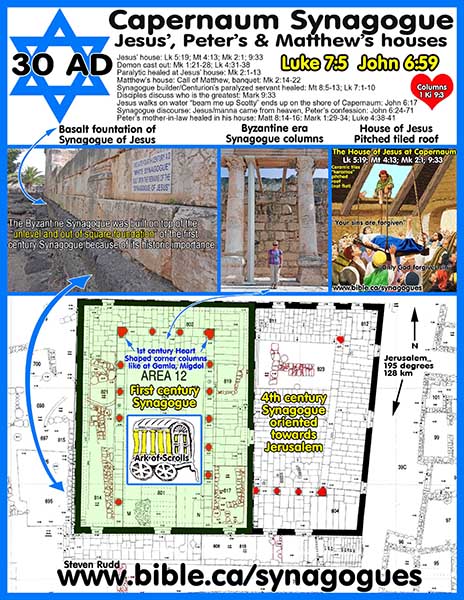
B. The Holy Spirit indwelling metaphor of the Old and New testament traces its origin back to the cloud of the tabernacle and Solomon’s temple:
1. God metaphorically “dwelt” in the cloud:
a. "The Lord said to Moses: “Tell your brother Aaron that he shall not enter at any time into the holy place inside the veil, before the mercy seat which is on the ark, or he will die; for I will appear in the cloud over the mercy seat." (Leviticus 16:2)
b. "Then Solomon said, “The Lord has said that He would dwell in the thick cloud. “I have surely built You a lofty house, A place for Your dwelling forever.”" (1 Kings 8:12–13)
c. In 1446 BC, it is clear that many of the Hathor (cow-goddess: golden calf) worshipping Jews who left Egypt would view this indwelling as literal.
2. David wanted to build a temple that God would “DWELL in” [ie indwell] and to “house” God inside a stone building:
a. "Now it came about when the king lived in his house, and the Lord had given him rest on every side from all his enemies, that the king said to Nathan the prophet, “See now, I dwell in a house of cedar, but the ark of God dwells within tent curtains.” Nathan said to the king, “Go, do all that is in your mind, for the Lord is with you.” But in the same night the word of the Lord came to Nathan, saying, “Go and say to My servant David, ‘Thus says the Lord, “Are you the one who should build Me a house to dwell in? “For I have not dwelt in a house since the day I brought up the sons of Israel from Egypt, even to this day; but I have been moving about in a tent, even in a tabernacle." (2 Samuel 7:1–6)
b. "“But will God indeed dwell with mankind on the earth? Behold, heaven and the highest heaven cannot contain You; how much less this house which I have built. “Yet have regard to the prayer of Your servant and to his supplication, O Lord my God, to listen to the cry and to the prayer which Your servant prays before You; that Your eye may be open toward this house day and night, toward the place of which You have said that You would put Your name there, to listen to the prayer which Your servant shall pray toward this place." (2 Chronicles 6:18–20)
3. The temple was where God’s ears, eyes, heart and name was located day and night, forever:
a. "The Lord said to him, “I have heard your prayer and your supplication, which you have made before Me; I have consecrated this house which you have built by putting My name there forever, and My eyes and My heart will be there perpetually." (1 Kings 9:3)
b. "If they take thought [lit: direct their HEARTS] in the land where they are taken captive, and repent and make supplication to You in the land of their captivity, saying, ‘We have sinned, we have committed iniquity and have acted wickedly; then hear from heaven, from Your dwelling place, their prayer and supplications, and maintain their cause and forgive Your people who have sinned against You. “Now, O my God, I pray, let Your eyes be open and Your ears attentive to the prayer offered in this place." (2 Chronicles 6:38-40)
c. "“Now My eyes will be open and My ears attentive to the prayer offered in this place. “For now I have chosen and consecrated this house that My name may be there forever, and My eyes and My heart will be there perpetually." (2 Chronicles 7:15–16)
4. Prayers were to be directed to the Jerusalem temple.
a. The political theocratic ideology of Islam began with Muhammed instructing his followers to pray toward Jerusalem, only to change and pray towards pagan Mecca after his naïve attempt to convert the Jews failed.
b. "“When Your people go out to battle against their enemies, by whatever way You shall send them, and they pray to You toward this city which You have chosen and the house which I have built for Your name, then hear from heaven their prayer and their supplication, and maintain their cause." (2 Chronicles 6:34–35)
5. The human body is the temple of God where God’s eyes, ears, heart and name is:
a. "The Jews then said to Him, “What sign do You show us as your authority for doing these things?” Jesus answered them, “Destroy this temple, and in three days I will raise it up.” The Jews then said, “It took forty-six years to build this temple, and will You raise it up in three days?” But He was speaking of the temple of His body." (John 2:18–21)
b. "Or do you not know that your body is a temple of the Holy Spirit who is in you, whom you have from God, and that you are not your own?" (1 Corinthians 6:19)
c. The collective church is also a metaphoric temple: "Do you not know that you are a temple of God and that the Spirit of God dwells in you?" (1 Corinthians 3:16)
d. When non-Christians pray “through us” God will answer their prayers: "“Also concerning the foreigner who is not from Your people Israel, when he comes from a far country for Your great name’s sake and Your mighty hand and Your outstretched arm, when they come and pray toward this house, then hear from heaven, from Your dwelling place, and do according to all for which the foreigner calls to You, in order that all the peoples of the earth may know Your name, and fear You as do Your people Israel, and that they may know that this house which I have built is called by Your name." (2 Chronicles 6:32–33)
6. “Literal and personal indwelling of the Holy Spirit” advocates today argue for a literal indwelling in a metaphoric building.
a. Although the language of the Old Testament appears like God literally indwells the cloud, tabernacle and Temple, it was metaphoric and symbolic because “heaven and earth cannot contain God” much less a tiny building.
b. Although the language of the New Testament appears like the Holy Spirit literally indwells the human body, like the antitypical Old Testament cloud and temple, it is metaphoric and symbolic.
7. For the Christian, the indwelling is a metaphor for God’s fellowship: God’s ears, eyes, heart and name were there: 1 Kings 9:3; 2 Chron 6:18–20; 39-40; 7:15-16
a. Ears: prayer
b. Eyes: providential protection
c. Heart: love, compassion, grace
d. Name: “Christian”
8. Christians take their “inner room” with them everywhere and it entered when they close their eyes:
a. "“But you, when you pray, go into your inner room, close your door and pray to your Father who is in secret, and your Father who sees what is done in secret will reward you." (Matthew 6:6)
See also: East orientation of Jewish temples and altars
By Steve Rudd 2017: Contact the author for comments, input or corrections
|
Jesus your messiah is waiting for you to come home! |
|
|
Why not worship with a first century New Testament church near you, that has the same look and feel as the Jewish Synagogue in your own home town. As a Jew, you will find the transition as easy today as it was for the tens of thousands of your forefathers living in Jerusalem 2000 years ago when they believed in Jesus the Nazarene (the branch) as their messiah. It’s time to come home! |
|
By Steve Rudd: Contact the author for comments, input or corrections.
Go to: Main Ancient Synagogue Start Page

